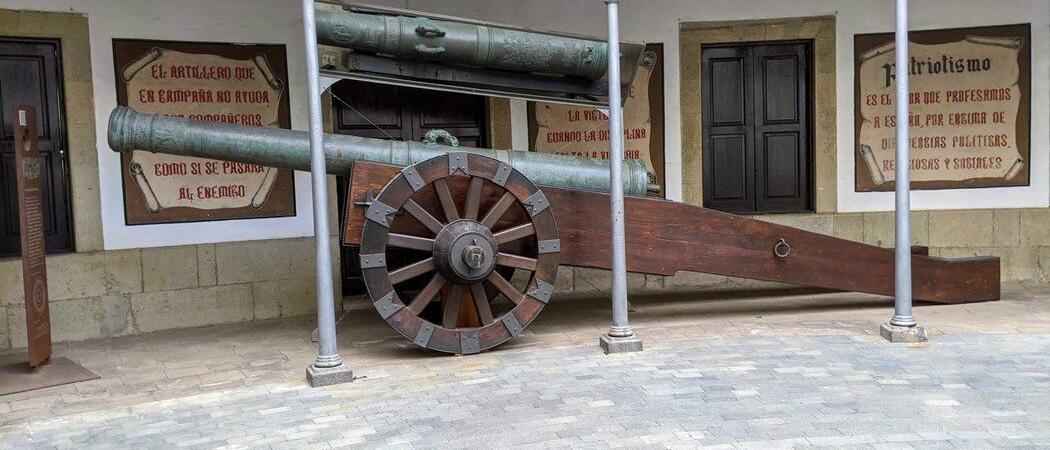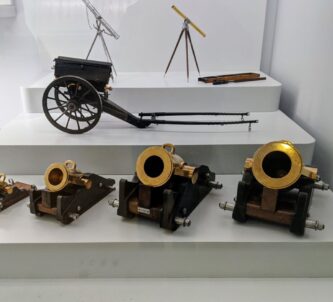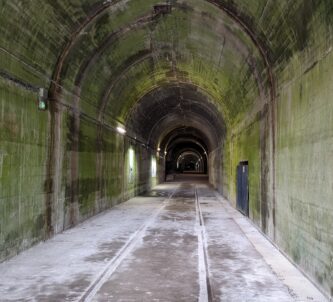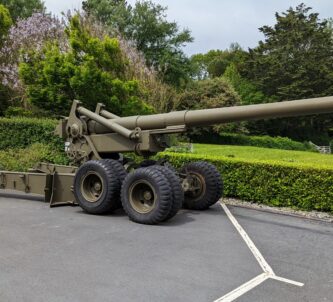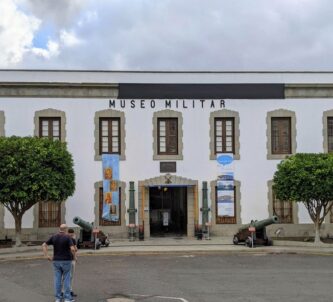This giant cannon was cast by the Flemish master gunmaker Remy de Halut* at his foundry in Mechelen, in 1547.
The Hercules cannon (El Cañón Hercules) is an extra long culverin – a ‘Royal or Double culverin’ – designed for long range destruction. Its 4.17m (13½ ft) barrel could probably hurl a 175mm (6″) cannonball anywhere up to 450 metres (1,476 ft).
It’s not clear where the Hercules cannon was for its first two decades. It is suspected that it might have been one of the pieces bought by a Juan de Monteverde on his visit to Brussels in 1548, and that the island of Tenerife later purchased it from him.
What we do know is that on 22nd April 1566 the Council (“Cabildo”) of Tenerife commissioned a merchant who was going to Flanders, Julio Usodimar, to buy a large culverin and six smaller pieces for the defence of Santa Cruz de Tenerife. The whole process took a little longer than planned and we can see from the council minutes that there was some duplicity over the quality of some of the guns he brought back (they split on their test firing), but there was no problem with Hercules. By 1577 Hercules was installed in the Castillo de San Cristóbal, the fortress guarding the harbour, and began earning its keep fending off attacks from pirates and other ne’er-do-wells… like the British!
In 1657 it was part of the artillery defending Santa Cruz from an attack by a British fleet under Robert Blake. In 1706 Hercules was used against another British attack commanded by Rear Admiral John Jennings, and in 1797 it was participating again in the battle with Rear Admiral Horatio Nelson’s fleet of nine ships who were once again trying to capture Santa Cruz. It was in this battle that Nelson lost his right arm… to a colleague of Hercules, a cannon named El Tigre.
Finally el Cañón Hercules was retired and in 1840 it was given a home in the Artillery Museum in Madrid. In 2004 it was allowed to come home to Tenerife, where it can be seen in the Military Museum of the Canaries in the Almeyda fortress, Santa Cruz de Tenerife.
* Sometimes referred to as “Remigio”, a variant of Remy.

